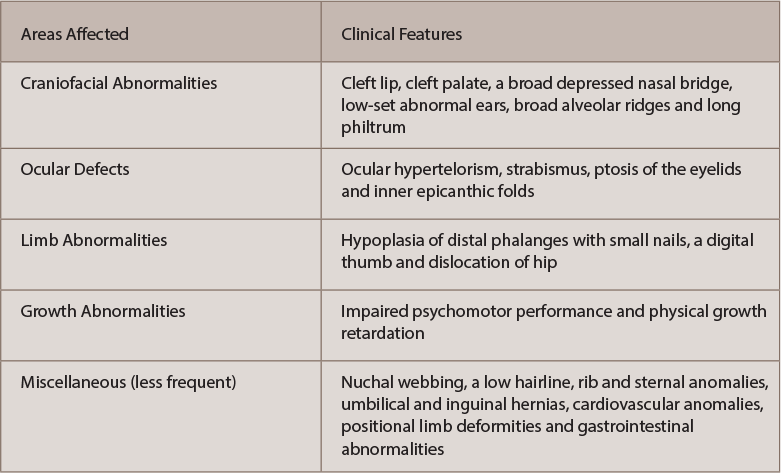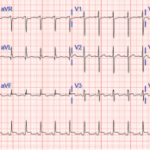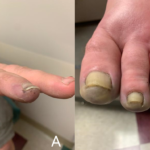Research has shown that anticonvulsants are teratogens and pose a risk for fetal malformations. Meadow was the first to note a possible link between congenital abnormalities and maternal use of anticonvulsive drug in 1968.1 In 1974, Barr et al noted hypoplasia and irregular ossification of the digital distal phalanges with nail dystrophy in children born to epileptic mothers who were taking anticonvulsive medications.2
In 1975, Hanson and Smith identified special clusters of anomalies, including craniofacial features, microcephalus, mental retardation and hypoplasia of the distal phalanges in the offspring of women taking phenytoin, and they proposed calling these specific phenytoin-related anomalies fetal hydantoin syndrome (see Table 1).3,4
Since then, several authors have substantiated this association, especially with diphenylhydantoin (phenytoin). Most of the articles and case reports concerning this problem have been limited to pediatrics and orthopedics. Hand abnormalities have been reported as consistent features of this syndrome and act as a genetic marker indicating more serious teratogenic effects.5
In our case, a patient presented with distal limb deformities at the age of 19 in an adult rheumatology clinic. This case is a great way to bring these congenital musculoskeletal deformities and more serious underlying abnormalities to the attention of both pediatric and adult rheumatologists. Also, knowledge and awareness will offer cost savings related to unnecessary testing and referrals.
Case Report
A 19-year-old young man presents with his father in the adult rheumatology clinic for evaluation of “nodes on his knuckles.” He was referred by his primary care physician due to deformities of his hands and feet. He denies any symptoms, and a complete review of his systems is negative.
His father mentions that his son has a history of cardiac murmur; however, the patient’s previous complete cardiac evaluation, including echocardiogram, is unremarkable. He is otherwise healthy and has no other past medical history.
He is adopted and is of Mexican Cuban heritage. His biological mother had a history of epilepsy. He does not smoke or drink alcohol. He does not take any medication on a regular basis.
His physical exam is significant for a grade II systolic murmur.
His musculoskeletal exam shows tapering of his fingers distally, with hypoplastic distal phalanges and fingernails (see Figure 1). He also has flexion deformities of the distal interphalangeal joints and slight extension of his proximal interphalangeal joints, more pronounced over the fourth and fifth digits (see Figures 2 and 3). His distal interphalangeal flexion deformities are reversible on exam (Jaccoud’s arthropathy). His thumbs are thinner than normal (see Figure 4).




